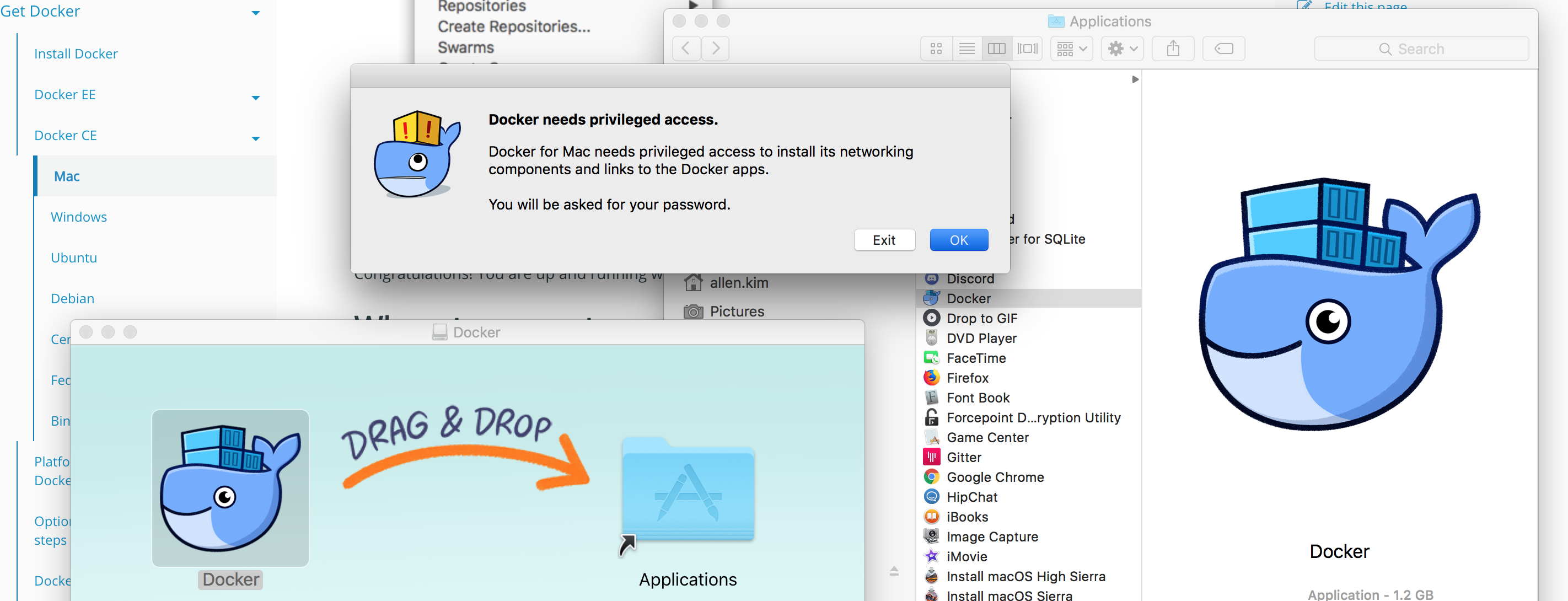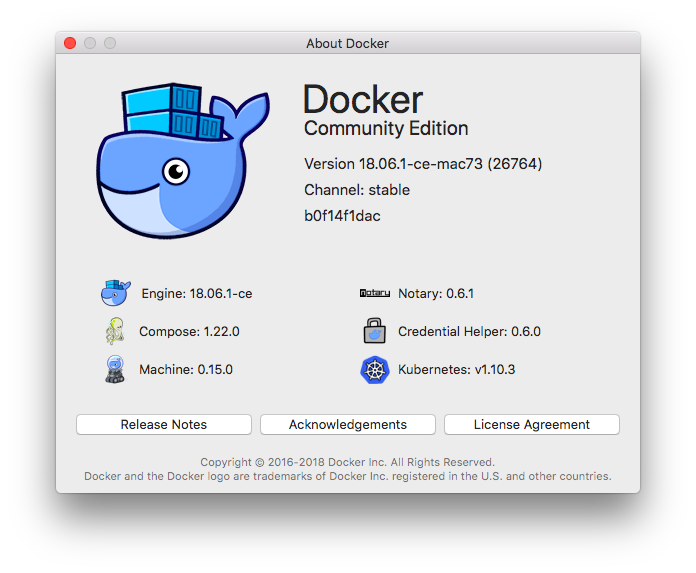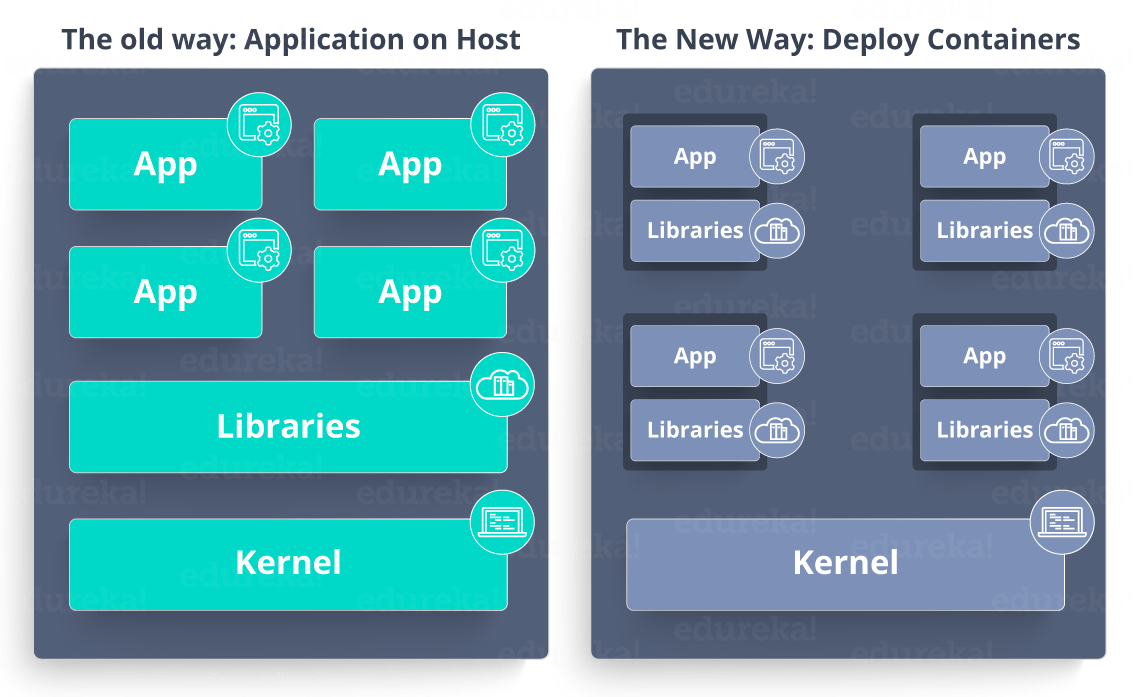Docker For Mac Machine Ip
$ docker-machine ip default 192.168.99.100 PDF - Download Docker for free Previous Next. This modified text is an extract of the original Stack Overflow Documentation created by following contributors and released under CC BY-SA 3.0. This website is. Docker for Mac: use host.docker.internal. For Docker on Mac, there is a magic ip 192.168.65.2 in docker VM which represent host machine, or you can just use host.docker.internal inside docker VM will ok. I WANT TO CONNECT FROM A CONTAINER TO A SERVICE ON THE HOST. The host has a changing IP address (or none if you have no network access).
Christian Nadeau | January 24, 2017 | 4 Min Read
When using a containerized application, it’s important to be able to easily deploy them in the cloud. Docker-Machine is a tool that lets you install Docker Engine on Virtual Hosts. We’ll outline how we deploy containers and how to transfer files to/from the machine.
What is docker-machine?
When you have a containerized application, it’s important to be able to easily deploy them in the cloud, not only running them locally using Docker for Mac/Windows or from a Linux box locally. The tool to be able to create a remote virtual machine (VM) easily and manage those containers is called docker-machine.
In short, it allows you to control the docker engine of a VM created using docker-machine remotely. It even allows you to update the docker engine, restart the virtual machine (depending if the driver supports it), view its state and so on.
The main reason you would use docker-machine is when you want to create a deployment environment for your application and manage all the micro-services running on it. For instance, you can easily have a development, staging and production environment accessible from your own machine and update them accordingly.
The drivers concept acts as a connector to 3rd party services such as Azure, Amazon, etc. This allows you to create a complete set of resources around the actual VM in order to easily manage it from each service’s admin portal. There is also the generic driver which allows you to convert an actual virtual machine into a docker-machine.
NOTE: Reference material may be downloaded here
How to create a docker machine?
Azure
This will create a virtual machine on Azure and install docker engine on it.
VERY IMPORTANT:

This command will DELETE the Azure virtual machine and all related resources from your subscription! Use it with care.
VirtualBox
This will create a virtual machine on your local VirtualBox instance and install docker engine on it.
Generic
This will use the public identification key in order to connect to an existing machine (virtual or not) and install docker engine on it.
Docker For Mac Machine Ip Address
NOTE: This driver does not yet allow you to restart/shutdown the system.
You have a docker-machine VM, now what?
NOTE: We’ll suppose the docker-machine is created, reachable and named demo-machine
Docker For Mac Machine Ipad
Here is a simple docker-compose.yml example:
Deploy containers locally
Start this hello world docker-compose locally:
You can curl it locally and see the content of the index.html page:
Now stop and delete the created container of the locally started docker-compose:
Deploy containers to a remote host
Let’s do the same thing but on the remote demo-machine.
Change the local docker environment variables to the demo-machine ones:
You’re now targeting demo-machine when using any docker commands. To validate which docker-machine you point to, use this command:
Start the same hello world docker-compose defined locally:
Try to curl locally:
The docker commands are not run locally, they are run on the docker-machine we just configured! You must use the IP of the docker-machine itself as follow:
SSH
Once the machine is created, it’s really easy to ssh into it because the SSH certificates are generated on the machine and kept locally:
Copy files to/from the machine
You can use SCP command to send/receive files to/from the machine.

Here is how to copy ~/localfile.txt into the home folder of the demo-machine
Here is how to copy ~/remote.txt from the home folder of the demo-machine to the local home folder:
Cleaning up the local docker environment
If you want to go back to your local instance:
To validate:
Get Email Updates
Get updates and be the first to know when we publish new blog posts, whitepapers, guides, webinars and more!
Suggested Stories
Guide to Creating Engaging Digital Health Software
This guide shares our knowledge and insights from years of designing and developing software for the healthcare space. Focusing on your user, choosing the right technology, and the regulatory environment you face will play a critical role in the success of your application.
Read MoreAccelerate Time To Market Using Rapid Prototyping
In this webinar, you will learn how to leverage rapid prototyping to accelerate your products time to market in one week, agile sprints.
Read MoreWebRTC: Top 5 Unified Communications Systems Integration Challenges


WebRTC is looking to be a game changer in terms of its impact on voice and data communications.
Read MoreThis is a short guide explaining how to run GUI applications from within Docker on Mac. This uses XQuartz to enable to set the DISPLAY variable within the container.
Install XQuartz
You can install XQuartz using homebrew with brew cask install xquartz or directly from the website here. At the time of writing, I had 2.7.11 installed on my machine with OSX El Capitan. After installing XQuartz restart your machine.
Install Docker for Mac
Install docker using brew cask install docker or directly from the website here.
Run XQuartz
Start XQuartz from command line using open -a XQuartz. In the XQuartz preferences, go to the “Security” tab and make sure you’ve got “Allow connections from network clients” ticked:
Host Machine IP
IP=$(ifconfig en0 | grep inet | awk '$1'inet' {print $2}') should set the IP variable as the ip of your local machine. If you’re on wifi you may want to use en1 instead of en0, check the value of the variable using echo $IP.
Now add the IP using Xhost with xhost + $IP. If the xhost command is not found check /usr/X11/bin/xhost as that might not be in your path.
Running a container
You can now try running firefox in your container with:
Docker For Mac Machine Iphone
or run octave using: